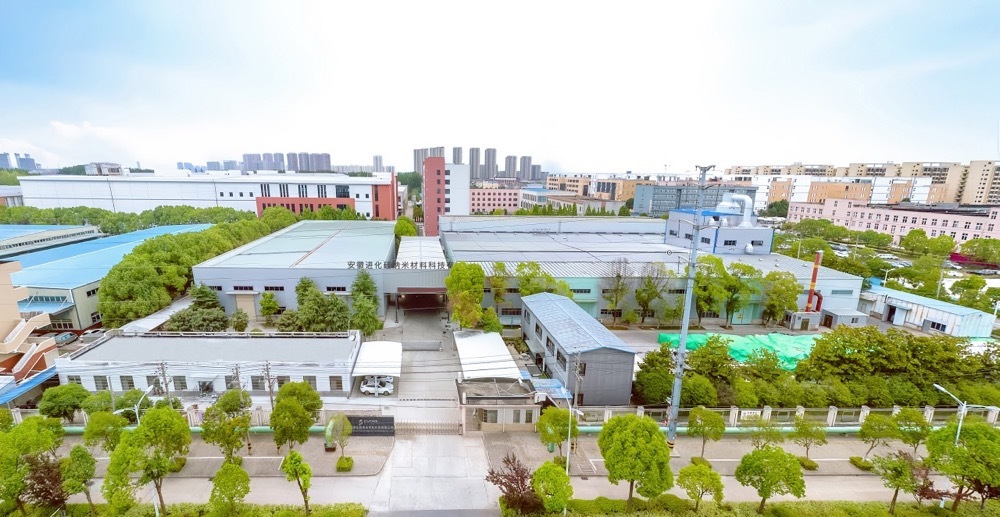News
Rice husk white carbon black: Opportunities and Innovations from Rice By-products
26 Dec,2024
As a globally widely cultivated food crop, rice husk contains enormous development potential as a byproduct of its processing. Generally speaking, rice husk contains17% - 20%silicon dioxide. After rice husk is utilized for energy through combustion, the residual silicon dioxide ash produced is remarkable, with silicon dioxide content typically reaching90% - 95.5%, making it an extremely ideal raw material for the production of white carbon black.

After low-temperature combustion, rice husk ash is obtained, with the main component beingSiO₂, accompanied by small amounts ofK,Naand other metal salts and oxides. Among many agricultural wastes, rice husk ash stands out due to its ultra-high silicon content, particularly because silicon exists mainly in an amorphous structure, providing an excellent silicon source for extracting white carbon black.
In this field, Anhui Jinhua Silicon Nano Materials Technology Co., Ltd. is actively exploring and leading the industry. The company relies on Beijing University of Chemical Technology for technical support and the strong research team led by Academician Zhang Liqun, and after10years of joint research and development, has made breakthrough progress in the preparation of bio-based silicon dioxide new material technology, independently creating a complete set of process technology and related equipment for preparing bio-based silicon dioxide using carbon dioxide acidification method. This technology uses renewable resources such as rice husk and straw as raw materials, replacing sulfuric acid with carbon dioxide as a precipitating reagent, and can produce bio-based silicon dioxide with a specific surface area50up to500m2/g.1Customers can achieve a carbon reduction of0.5tons for every ton of bio-based silicon dioxide used, thereby achieving carbon reduction goals. Moreover, the remaining filter cake residue is not wasted; it is professionally processed and converted into activated carbon, thus achieving comprehensive resource utilization of rice husk under the company's operation.
The silicon dioxide extracted from rice husk ash has unique advantages. On one hand, it exhibits high dispersibility, and aggregates can easily break into nano-sized primary particles, laying a good foundation for subsequent material applications; on the other hand, the organic components remaining on its surface act like a natural "adhesive," greatly improving the compatibility between white carbon black and rubber.SiOThe white carbon black from rice husk developed and produced by Anhui Jinhua Silicon Nano Materials Technology Co., Ltd. is added to natural rubber for application research, and a rigorous comparison is made with mainstream high-dispersibility white carbon black on the market. The results are exciting: the dispersibility of rice husk white carbon black in natural rubber is excellent, the tensile strength of the vulcanized rubber is significantly improved, and the overall application performance has made a substantial leap compared to the widely used high-dispersibility white carbon black. When rice husk white carbon black is applied in tire manufacturing, it not only effectively reduces rolling resistance and energy consumption, contributing to energy saving and emission reduction, but also ensures that tires maintain excellent anti-skid performance in low-temperature environments, safeguarding driving safety. In addition, in the field of styrene-butadiene rubber, rice husk white carbon black, as a reinforcing agent, shows significantly improved reinforcing effects, effectively enhancing the quality and performance of rubber products.

The emergence of rice husk silicon dioxide materials injects continuous vitality into the sustainable development of the rubber industry, providing a new choice for rubber reinforcing agents that align with environmental protection trends. The deep involvement of Anhui Jinhua Silicon Nano Materials Technology Co., Ltd. has paved a new application path for rice husk, a byproduct of rice processing, and through the company's technological innovation and industrialization practice, it is driving the entire rubber industry forward.
The emergence of rice husk silica material has injected continuous vitality into the sustainable development of the rubber industry, providing a new choice of rubber reinforcement agent that conforms to the trend of environmental protection. The deep participation of Anhui Evolutionary Silicon Nanomaterial Technology Co., Ltd. has opened up a new application path for rice husk, a by-product of rice processing. With the company's technological innovation and industrialization practice, it is driving the entire rubber industry forward.
Related News
Rice husk white carbon black: Opportunities and Innovations from Rice By-products


